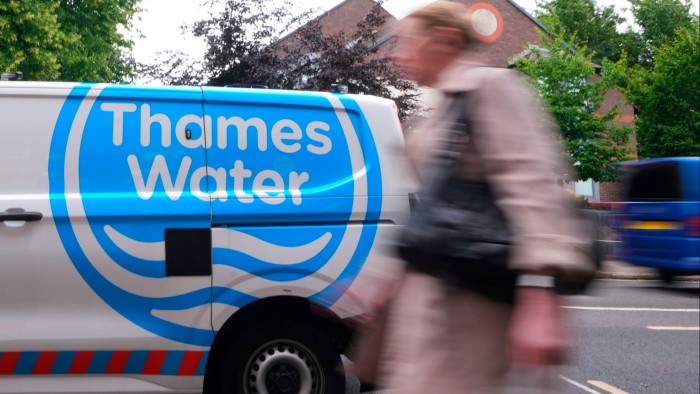Unlock the Editor’s Digest for free
Roula Khalaf, Editor of the FT, selects her favourite stories in this weekly newsletter.
When one has manoeuvred oneself into a corner, frantic wriggling only causes further scrapes. That could reasonably describe the predicament of Thames Water. News that private equity group KKR has pulled out of a plan to provide it with £4bn in fresh equity highlights just how hard pursuing a market-based solution is for the embattled UK utility.
In theory, it is possible to make Thames Water investable — just about. It currently has about £20bn of regulated assets and £18bn of debt. Over the next five years, revenue — while growing — will do so more slowly than outflows. That, along with fines and other niggles, will leave it with negative free cash flow of perhaps £5bn. The good news, however, is that planned investments will raise its regulated capital value to about £32bn — the main source of value creation.
On these very rough assumptions, Lex calculates that an investor injecting £4bn of equity could stand to double their money. If, that is, they can impose a 30 per cent haircut on existing debt and — most challenging of all — turn the utility’s performance around. It’s a reasonable, rather than huge, return on investment given Thames Water’s turbid history.
A sharper haircut on debt could invite a new equity investor rescue. However, senior bondholders — a group including Elliott Management, Aberdeen and many others — need to approve any voluntary recapitalisation in practice, so the space to impose punitive conditions may be limited.
That puts the onus on the government and regulators to provide an environment that is suitably lenient — in terms of bills, fines and performance metrics — so as to make the investment stack up. Presumably, under current conditions, it doesn’t for KKR, which has now walked off into the sunset.
Other interested parties may face similar challenges. The other “market” alternative is for Thames Water to pursue a restructuring plan proposed by the bondholders themselves, which also envisages haircuts and junior capital injections in the form of new equity.
But while the details of this proposal have not been disclosed, and holders of existing debt with skin in the game may be supportive, it is rare for companies with only one option on the table to get the very best deal.

There is, of course, another route. Putting Thames Water into special administration — a form of temporary renationalisation — would not be popular with the utility’s creditors. It would also be politically fraught, encumber public finances further, and might well send a poor signal to those looking to invest in UK infrastructure, whom the government needs onside.
But through a series of mis-steps, the UK has already manoeuvred itself into an uncomfortable space. Meanwhile, Thames Water is flailing around raising expensive emergency debt, paying large adviser fees and running auction processes that end up with few serious bidders. A chance to restructure under public ownership looks like the pick of a bad bunch.
